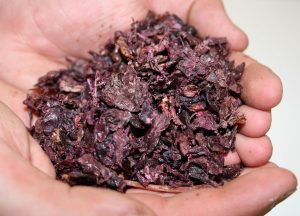Real and regenerated leather. Two different upholsteries, two prices levels, but undifferentiated in the eyes (and awareness) of consumers.
A recent survey concerning sofas of Impact Consulting Services (an American management consultant) published on the latest issue of Home Furnishing Business states it. 56,7% of respondents didn’t know how regenerated leather is, while for the 16,7% the definition refers to an improvement of it.
Among European consumers the ability to distinguish between real animal leather and hides and latex scraps (that’s how the bonded leather is made) is not so common. But now the invention of a particular cover arrives from Italy. A worthy eco-material, easily recognizable in terms of provenance and processing: the Wineleather, a leather obtained from grapes, seeds and stalks.
The idea is by Gianpiero Tessitore, a designer with the passion for eco-friendly products. After 3 years of researches and developments together with Francesco Merlino, an environmental chemist, Tessitore has realized a new material similar to leather, obtained from grapes wastes.
In the current year, this idea has received prestigious awards. Starting from Global Change Award, an H&M Foundation recognition which awarded it as the best project among 2.885 participants from 130 countries in the world. WineLeather has resulted the best Made in Italy innovation 2017 also for Unicredit Start Lab, honored of Unicredit innovative Made in Italy award.
Vegea, the company founded by Tessitore, has estimated that from 7 billion kilos of grape marcs produced per year in all the wineries, 3 billion square meters of wineleather are obtained, without affecting water resources (compared to 240 litres necessary for the tanning of animal leather per square-meter) and without chemical and polluting substances.
This innovation results adaptable to machineries and traditional production processes deployed for animal and synthetic leathers, thereby enabling an easy integration in the sector.
Referring to upholstery, leather and fashion processing, circular industrial symbiosis is one of the most important driver for future economy, where wastes produced by a company could be recycled by another one.

